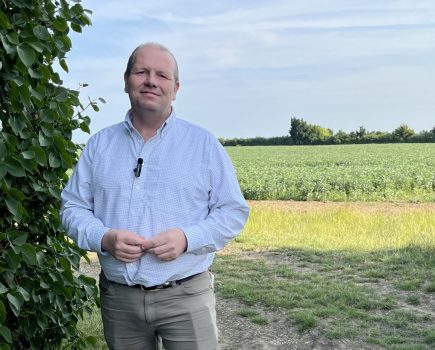 I’m getting to that age now where I can recollect how people used to predict the future.
I’m getting to that age now where I can recollect how people used to predict the future.
At school we were told that by the 2000s our lives would be dominated by leisure as machines, robots and automatons did all the work. If you leaf through the pages of the farming press of the 1960s and 70s you can find articles about the dawn of a futuristic farm-scape where tractors would drive themselves. And here we are 50 years later still sitting in our tractor cabs working our steady way up and down the field.
But that’s not to deny we have seen a revolution in labour-saving technology on farm. It’s the reason why 1000-acre farms in the 1970s had enough staff to turn out football teams whereas today they’d struggle to get a couple up to compete in the doubles at the village badminton club.
What those fore-sighted articles I read in my youth didn’t explain was that while farms would indeed see an exodus of labour, the returns from farming would mean the farmer would have to stay behind to do most of the work. While the sons and daughters of the farmworkers of the past now work in call centres and design video games, the sons and daughters of the farmers are doing the tractor-driving jobs that their fathers seldom had to worry themselves with.
Looking on the bright side, as the philosopher said, hard work and honest labour ennoble the soul. It’s always good to take inspiration from quotes about the dignity of physical labour from philosophers who spent their days sitting around having a good think.
The other prediction I recollect from the Tomorrows World programmes of the past is that the food we would eat would change out of all recognition in that it would become a diet of pills and pastes. This idea was largely inspired by the space programmes of the 1960s where, due to the confines of cockpits, the astronauts couldn’t sit down at a meal table to enjoy three platefuls a day but rather had to make do with high-calorie gunk squirted from sachets.
Of course, the other end of this story was not elaborated upon but us schoolboys still wanted to know what the details of the toilet arrangements were for our space heroes as they circled the earth. No doubt when it came to defecation, the arrangements were kept concentrated in the same way their intake was.
As we now know, mercifully it never came to pass that our food was grown in labs then served up with all the allure of toothpaste squeezed out onto an ashtray. Diets might have changed but we still enjoy filling our cakeholes with bulky grub.
So it’s with some amusement that today’s doom-mongers like George Monbiot are dusting down these same old predictions while making a good living recycling the stories as news. This current batch of Mystic Megs predict food production will be banished from the countryside and consigned to the urban tower blocks where our daily sustenance will be cooked up in vats.
Meanwhile back down on planet Earth it’s remarkable how cereals still make up over half of humanity’s food supply, much like they always have ever since some nomadic shepherds in the Middle East noticed that with a little skill and patience you could domesticate wild emmer.
So the idea that the age-old outdoor rural pursuit of cultivating the wheat plant under natural sunlight is going to come to a shuddering halt in the next few decades could be described as fanciful if not a little bonkers.
Owls of delight
February is not the best of months for bird spotting. The days tend to be short and grey leaving many of our feathered friends hunkering down as they see out the last of the winter.
Nonetheless, on farm it’s a good time to remember avian needs. Consequently we are replacing some of our barn-owl boxes that are now a remarkable twenty years old. Given my carpentry skills and penny-pinching love of plywood, the boxes have done remarkably well and provided homes for scores of barn-owl chicks.

All eyes on the skies for The Big Farmland Bird Count from 7-16 Feb, while some keen farmland birdwatchers are also on the hunt for cheap plywood.
They’ve also been buffeted by several storm force gales and much to my amazement not ended up over the hedge. But I fear they maybe now proving too draughty even for the least discerning owl. So it’s out with the old and in with the new.
They say birds choose their nest sites on Valentine’s day. Clearly, I’m tempted to include a candle-lit plate of voles in the chamber to get them in the mood. And don’t forget The Big Farmland Bird Count during the second week of Feb.
Guy Smith grows 500ha of combinable crops on the north east Essex coast. @EssexPeasant




